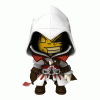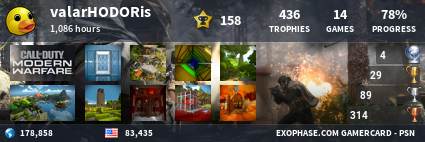Optimal Yahtzee
While chess remains my favorite board game, when my family wants an enjoyable afternoon game we usually reach for Yahtzee. Tom Verhoeff came up with a mathematical solution for making the optimal choice in any situation that may arise in a Yahtzee game. Furthermore he provided a website where you can play solitaire Yahtzee and be coached by a computer program equipped with the optimal strategy. The best way to improve your game is to play on this site, frequently press the "Analyze" button, and learn from your mistakes:
http://www-set.win.tue.nl/~wstomv/misc/yahtzee/yptd.php
Let's back up a moment and define what "optimal" means when talking about Yahtzee. This strategy maximizes your average final score when playing alone with fair dice. The theoretical maximum average score is 254.5896. If you're trying to beat your all time high score then this is not the strategy for you. Instead you'd want to adopt a risky "go for broke" strategy aimed at rolling multiple Yahtzees. By the way, my personal best score was a five Yahtzee 726. If you're playing against other people and trying to win a particular game, then you should adjust your strategy to play more aggressively when behind and more conservatively when ahead. Finally, "optimal" does include the benefit of clairvoyance in predicting what dice rolls will come next. Sometimes a person playing non-optimally will get lucky and score higher than if she had made the optimal choice. Those are the breaks.
Verhoeff claims that the optimal strategy is very complicated and hard to learn by human players. I would have to agree. Still, I can often play entire games without deviating from the optimal strategy. In this topic I will post several videos where I do just that. Each video is narrated live so you can understand my thought processes as I make choices.
The table below summarizes the optimal strategy for the first turn of the game only. The rows are arranged roughly from best to worst hand. What you do with a hand often depends on whether it comes on your first, second or third roll. I recommend that you memorize this table because it forms the basis of the optimal strategy for the opening four turns. As the game progresses you need to make minor adjustments, mostly due to the fact that some rows on your scorecard are no longer available.
| Best hand | Roll 1 | Roll 2 | Roll 3 |
|---|---|---|---|
| Yahtzee | Book Yahtzee | Book Yahtzee | Book Yahtzee |
| Large Straight | Book Large Straight | Book Large Straight | Book Large Straight |
| Outside Small Straight 2-3-4-5 |
Hold it | Hold it | Book Small Straight |
| Small Straight 1-2-3-4 or 3-4-5-6 |
|
Hold it | Book Small Straight |
| Full House | Hold 3 of a kind |
| Book Full House |
| 4 of a kind | Hold it | Hold it | Book in Upper Section |
| 3 of a kind | Hold it | Hold it |
|
| Two pair | Hold higher pair |
|
|
| Pair (for small straight with pair, see Small Straight above) |
|
|
|
| No pair, no straight |
Hold 5 | Hold 2-3-5 or 4-5-6, whichever you have | Book 1 in Upper Section |
Here's an example of how to use this table. Say on your first roll you get 3-4-4-5-6. That's a pair of 4's. If you look up "Pair" in the left column it says "for small straight with pair, see Small Straight above". This is indeed a small straight with pair. It's not an Outside Small Straight (2-3-4-5) so we look at the next row for regular Small Straight (3-4-5-6). Since this is your first roll, refer to the column that says "Roll 1". Now that you've found the right cell in the table, there's a short heuristic on how to proceed. "If no pair, hold Small Straight" does not apply because you have a pair. "If pair of 2's or less, hold Small Straight" also does not apply because your pair of 4's is greater than a pair of 2's. That leaves you with "Otherwise hold pair". You hold the pair of 4's and roll the other three dice.
On your second roll you get 3-3-4-4-4. Proceed to the row labelled "Full House" and the column for "Roll 2". It says "If triple 3's or less, book Full House". Your triple is in 4's, not 3's, so this does not apply. The next line tells you to "hold 3 of a kind". Hold the three 4's and roll again.
Your last roll produces 4-4-4-4-6. Referring to row "4 of a kind", the last column says "Book in Upper Section". That's right. Regardless of how many points it would be you never book Four of a Kind in the Lower Section on your first roll. Book 16 under Fours in the Upper Section and be happy. You're now 4 points ahead of schedule toward reaching your Upper Section Bonus.
I call this a "typical game" because the final score is very close to the theoretical average of 254 and change.
Thanks/blame to DAZ and Cheese for encouraging me to create a video series on optimal Yahtzee.
I can always count on good ole Stabguy to post something interesting and completely unrelated to the rest of the forum. 
If you're looking for more options for an enjoyable afternoon game with your family, let me know. 
You are missing some Flash content that should appear here! Perhaps your browser cannot display it, or maybe it did not initialize correctly.
This episode contains some discussion about how to score turns that don't go your way. I still end up with a better than average game.
You are missing some Flash content that should appear here! Perhaps your browser cannot display it, or maybe it did not initialize correctly.
Scoring a Yahtzee changes the optimal calculus for the rest of the game. A more aggressive strategy is adopted because a second Yahtzee would score a 100 point bonus points.



